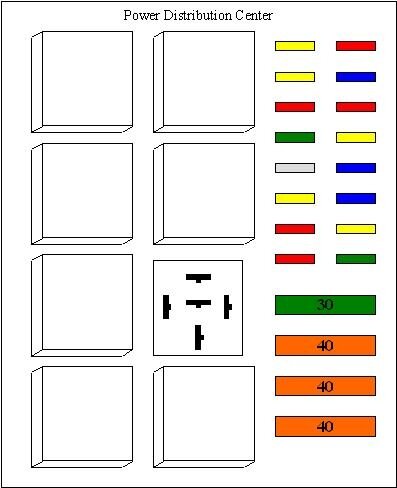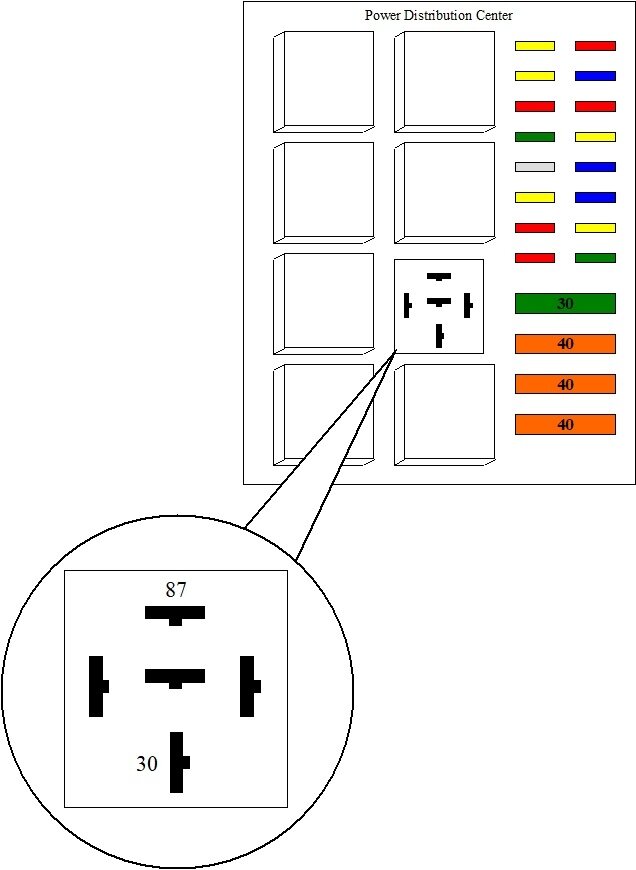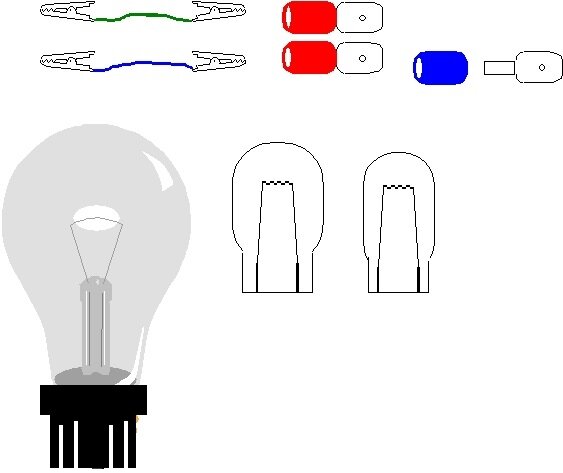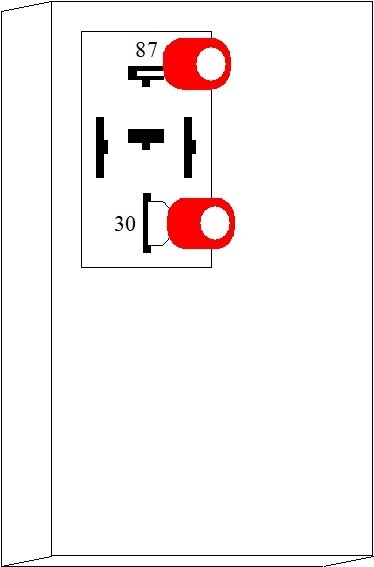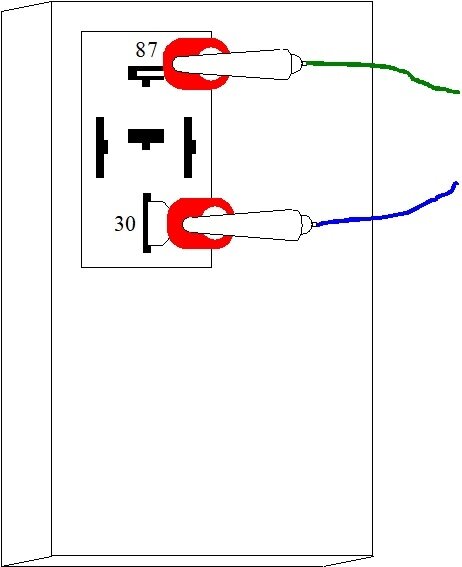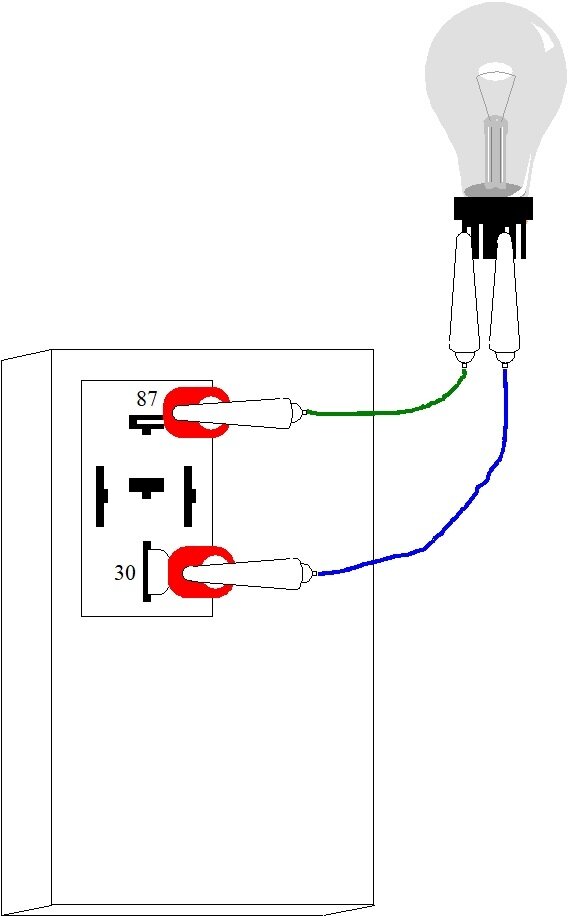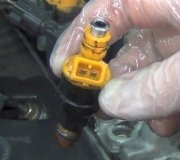Let me get you started with a trick that will prevent you wasting a lot of fuses. Replace one of the relays with a light bulb. When the short is present and the circuit is powered up, the bulb will limit current to a safe one amp. The bulb will be full brightness and hot, so don't lay in anything that can melt. The ASD and fuel pump relays turn on at the same time, but only for one second when the ignition switch is turned on. That's more than long enough to blow the fuse. They don't turn on again until the Engine Computer sees engine rotation, (cranking or running). This same trick was originally used to replace a blown fuse, but that first one second the relays turn on isn't enough time to troubleshoot anything, and it's not practical to keep cranking the engine during the testing. By using the test bulb to replace a relay, the circuit will be powered up without even needing to turn on the ignition switch.
Wiggle wire harnesses, and unplug various items to see what makes the short go away. When it does, the test bulb will get dim or go out. I put these sad drawings together to lead even the most novice troubleshooter through the steps. Since more stuff is run from the ASD relay, unplug that one only, then see if the fuse blows. If it does, remove the fuel pump relay and try again. Once you know which one causes the fuse to blow, that's the one to replace with the test bulb. A common 3157 brake light bulb works well for this.
To insult you even more, the following is meant for others researching this topic who have little or no electrical diagnostic skills:
This story explains how the bulb in place of the blown fuse makes finding a short so fast and easy. Fuse 3, a large 30-amp fuse blows as soon as the ignition switch is turned on. The Engine Computer turns the automatic shutdown, (ASD) relay on for just one second, then it turns it on again when it sees engine rotation, (cranking or running), but by that time the fuse is blown. The test light bulb is meant to replace the blown fuse, but to work in this circuit, you would have to be cranking the engine so the ASD relay stays turned on. That's not practical. Instead, the same procedure works by bypassing the relay with the bulb instead of bypassing the fuse. Since the 12-volt feed to the relay is constant, the ignition switch doesn't have to be turned on. The light bulb will complete the circuit so current can flow to the short, but the resistance of the bulb will limit that current to a safe value, less than one amp.
The first drawing shows a typical under-hood fuse box with the relay removed.
In the second drawing, terminals 30 and 87 are shown. Those are for the two contacts in the relay. The test light bulb is going to do what those contacts normally do.
The items needed are shown in the third drawing. The easiest way to connect the bulb is with a pair of clip leads and a pair of generic, universal spade-type terminals. You can find a dozen clip leads for about three dollars at Harbor Freight Tools. These are available in different sizes. Stick with the smallest ones to ensure the alligator clip will fit inside the terminal.
To buy the terminals, you'll end up buying a box of typically 50 or more. Instead, any electronic hobbyist will have many of these lying around. The spade end should be no fatter than the terminals on the relay. It's common for the wire end to be too small in diameter for the alligator clip to fit in. The blue terminal has the insulating barrel removed by twisting it off. Now just stick the terminals in that way, and clip the alligator clips to them. The fourth drawing shows the terminals inserted in terminals 30 and 87. In the fifth drawing, a clip lead has been connected to each terminal.
Finally, in the sixth drawing, the bulb is connected. In this type of circuit, it is powered up now, and if the short is present, the bulb will be full brightness. Bulbs get real hot and will melt plastic and carpeting, so be careful where you set it. The bulb could also be dim or off. If it's dim, the short is not present right now. Some current is flowing through things on the circuit that normally have current flow when this relay turns on. If the bulb is off, no current is flowing because everything on the circuit is switched off. In either of those last two cases, the bulb will flash full brightness if you do something to make the intermittent short occur. Tap around the vehicle with a rubber hammer, and move wire harnesses around to see what makes the short show up.
At this point it is almost required to know what is on the circuit so you'll know what to disconnect and where to look. Typical things on the ASD relay include the injectors, ignition coil(s), alternator field, oxygen sensor heaters, and fuel pump or fuel pump relay. Shorted O2 sensor heaters are rare but do account for a lot of blown ASD fuses. Also look for O2 sensor wire harnesses that fell down onto hot exhaust parts. Shorted injectors and ignition coils are just about unheard of. If one were to short, that still wouldn't blow the ASD fuse until the Engine Computer tried to fire them. That means cranking the engine.
A final word about the test bulbs. Because they limit current flow, even when the short is located and removed, items on that circuit will not operate. Most of the 12 volts in the circuit will be "dropped" across the bulb, leaving very little left for the rest of the circuit. Fan and seat motors will be totally dead until the relay is reinstalled. In low-current lighting circuits such as for tail lights, you might see a dim glow in some of the bulbs. They too will be normal full brightness once the test bulb is no longer in the circuit. In an ASD circuit, once the test bulb has used up some of the 12 volts, there won't be enough left to open an injector or develop a spark from a coil. You'll have a crank / no-start condition until the relay is reinstalled.
See how far this gets you. Once we know which relay has the short on its circuit, I'll find any diagrams we might need to hunt this down.
Images (Click to make bigger)
Wednesday, April 26th, 2023 AT 7:53 PM
